Studio Libeskind completed this innovative convention center in time for the advent of cultural and diplomatic activities in 2015, when this small medieval town metamorphosis into the European Capital of Culture.The City of Mons conceived of Congress Center as a new architectural landmark, a key element in a plan for economic revitalization, and as a connector between the old and the new. From the light- steel viewing platform at the top, a visitor can spy the 17th-century Beffroi tower, a UNESCO Heritage Site, in the historic center of town, and a new train station designed by Santiago Calatrava in the newer neighborhood of “Grands Prés.”
The Congress Center’s cladding is open in a manner that gives texture and light to the bearing structure – ribbon concrete walls that ascend in a spiral. The lower walls are clad with vertical slats of unfinished Robinia wood that echo the trees in a neighboring park. The upper are clad with vertical bands of anodized aluminum that follow the curve of the wall.
The ribbon walls allow for great flexibility of space, essential in a complex that houses a grand entrance hall, three auditoriums, a multipurpose hall, conference rooms, offices, a restaurant, an underground parking and a green roof. To maintain the visual integrity of the form, the architects inserted few windows along the ribbon wall—and those are fronted by slats that are rotated to allow for daylight and views
Surrounding the complex is a forecourt of polished, earth-colored concrete, flecked with bands of Belgium blue stone. These blue bands continue onto the ribbon walls forming an irregular pattern that reaffirms the materiality of the design.
Innovative Convention and Congress Center
Centre De Congrès à Mons, Mons, Belgium
The Mons International Congress Center is the first of several projects planned in the city over the course of the year, and will serve as a venue some of the planned cultural events taking place – from performances and talks to parties.
Daniel Libeskind’s design for the 12,500-square-metre building consists of two volumes that appear to have collided – the first is a elliptical structure clad with a lattice of Robinia wood, while the overlapping second block boasts a skin of champagne-toned anodized aluminum.
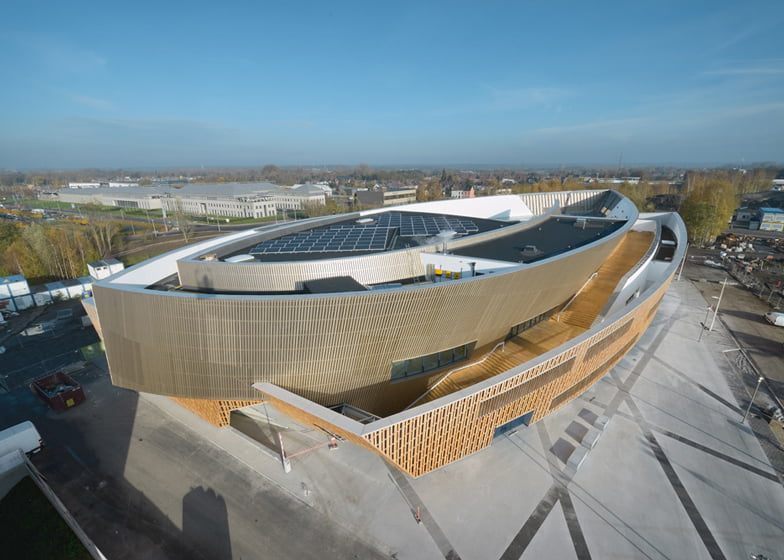
The New York-based architect describes it “an expression of contrasting geometric forms”. “We used simple, yet dramatic, design gestures, local materials and a flexible program for this modest gem of a building,” said Libeskind.” We hope the new innovative convention center brings a fresh dynamic to this area of revitalization in Mons.”
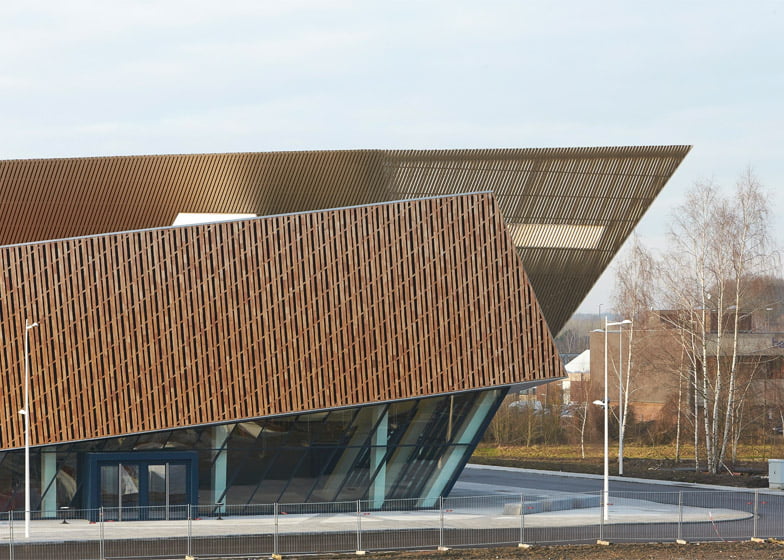
Completed in collaboration with local firm H2a Architects, the innovative convention center building features a viewing platform offering a vantage point over the city. Here, visitors can spy a 17th-century belfry, the La Heine river and the construction site for a new train station by Spanish architect Santiago Calatrava. The entrance is located on the north corner of the building. Both the timber and aluminum surfaces appear to have been lifted up along this edge, revealing a strip of glazing where the entrance sits within a protruding metal box.
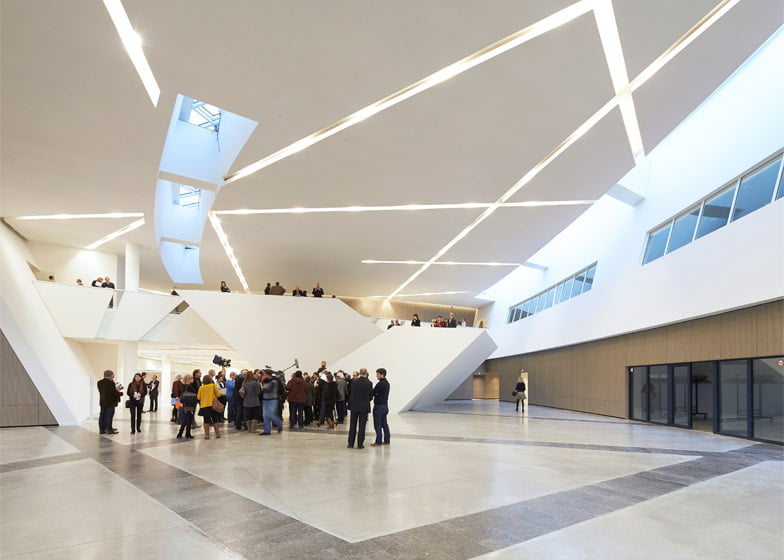
Just around the corner, the metal-clad upper section of the building form a dramatic point that is reminiscent of many Libeskind buildings, from the Dresden Museum of Military History to his media center for the City University of Hong Kong. There are few windows in this metallic surface, so as not to disrupt the visual impact of the volume. The ones that were added have been covered with slats to help them blend in.
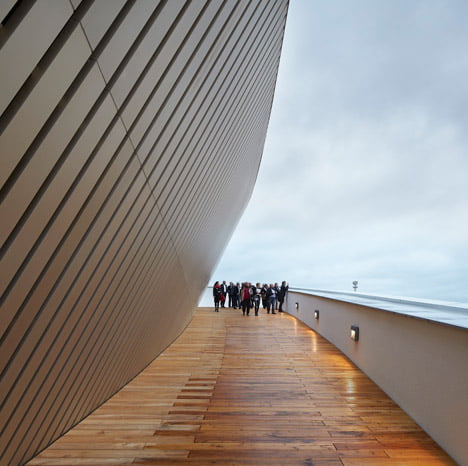
The innovative convention center building’s interior is organized as a spiral, centered around a double-height entrance lobby. Slender curving skylights help to bring daylight into this crescent-shaped space. The concrete floor is inlaid with crisscrossing stripes of Belgian blue stone – a motif continued from the landscaping that forms the building’s new surrounds. At the far end of this hall, a sculptural staircase made up of angular planes marks the entrance to three auditoriums.
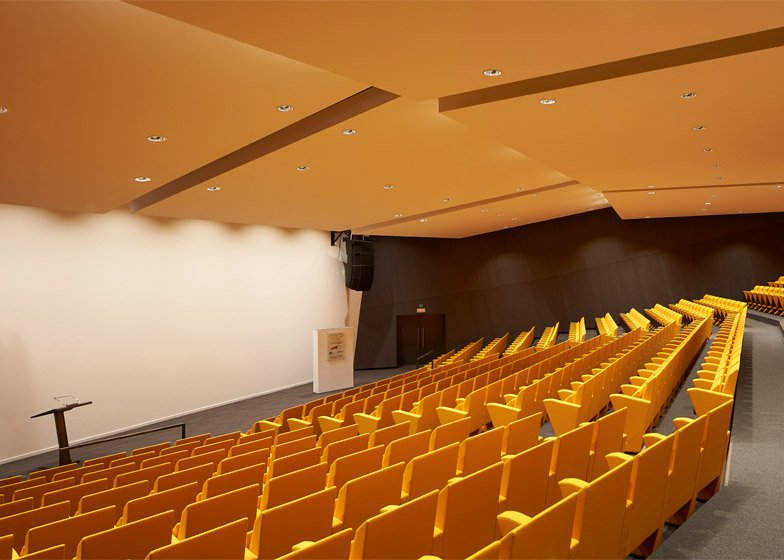
The largest has 500 seats, while the other two have room for 200 and 100 spectators. All three are fitted with orange Tangram seating, which Libeskind designed for furniture brand Poltrona Frau. Other facilities include a 380-square-metre events hall, 16 conference rooms, offices and a restaurant. There is also a planted terrace beside the rooftop viewing platform.
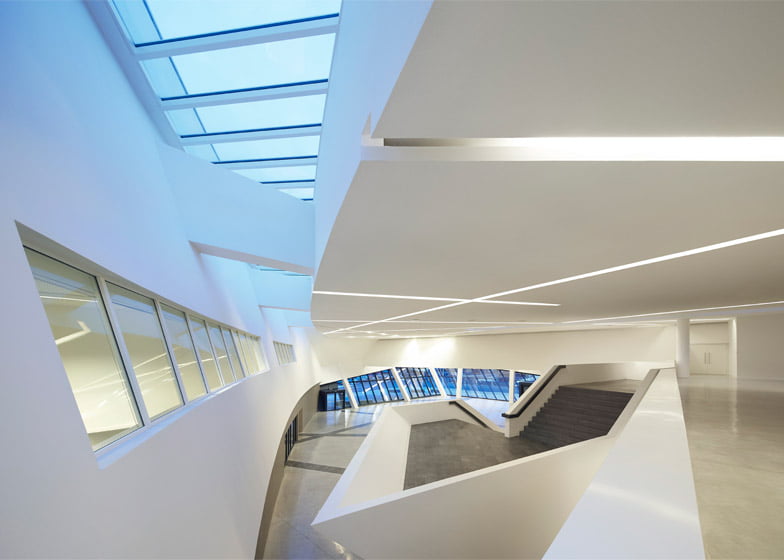
Photovoltaic cells cover large sections of the roof to help the innovative convention center building generate much of its own electricity. The structure also integrates passive solar shading. “For me sustainable building is not a new design trend or an added feature, it is about common sense and quality,” said Libeskind.
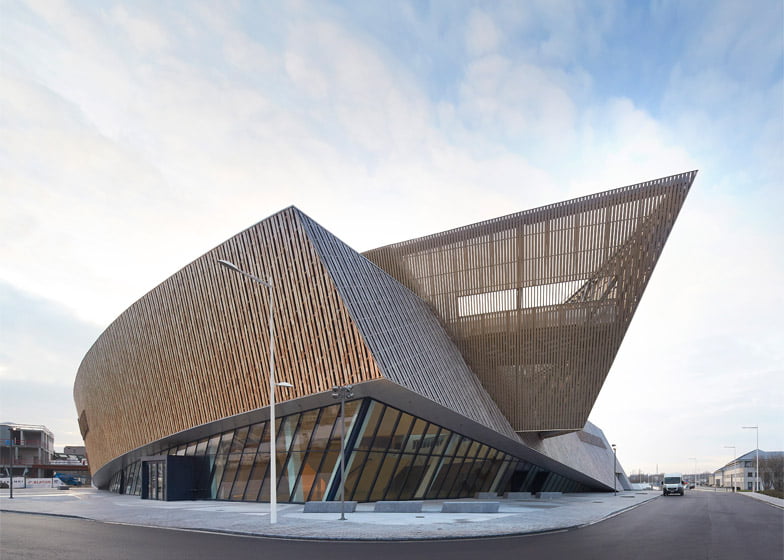
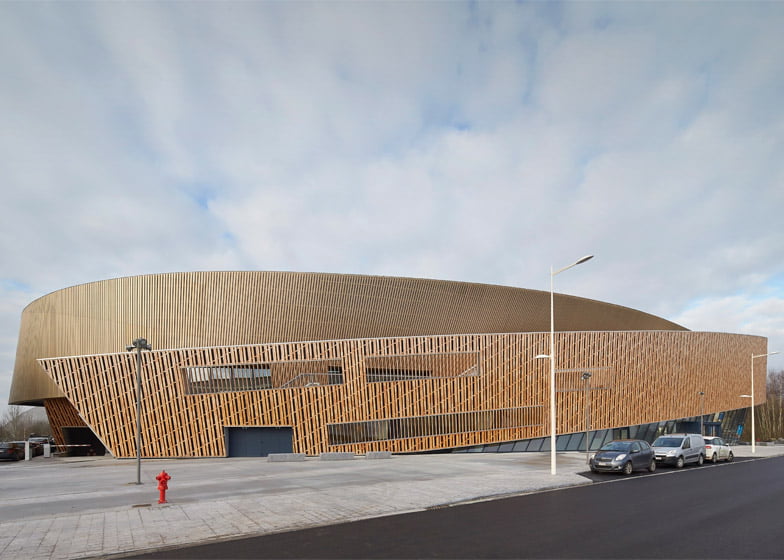
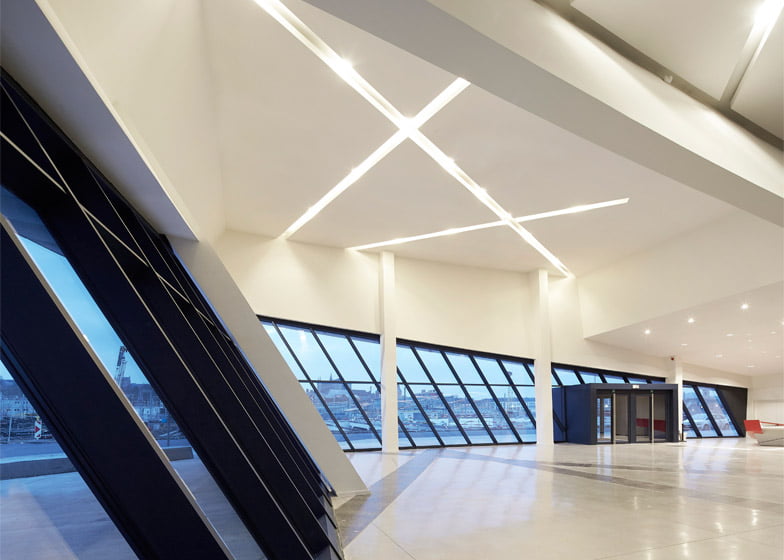
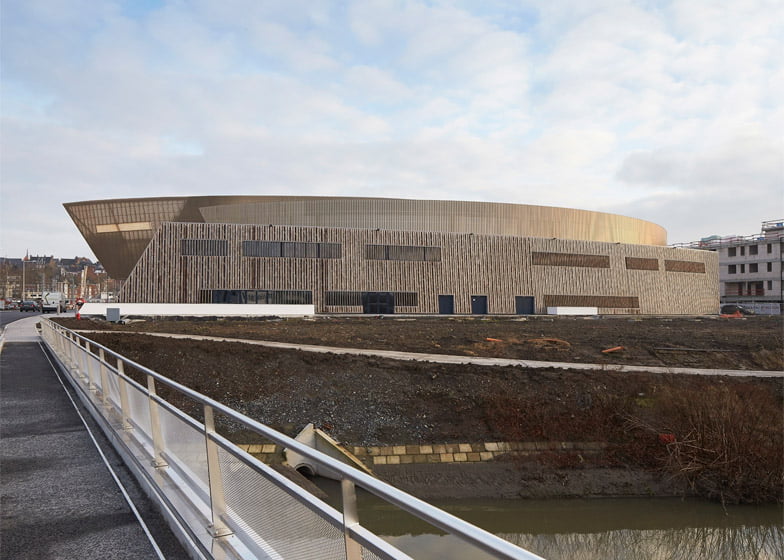
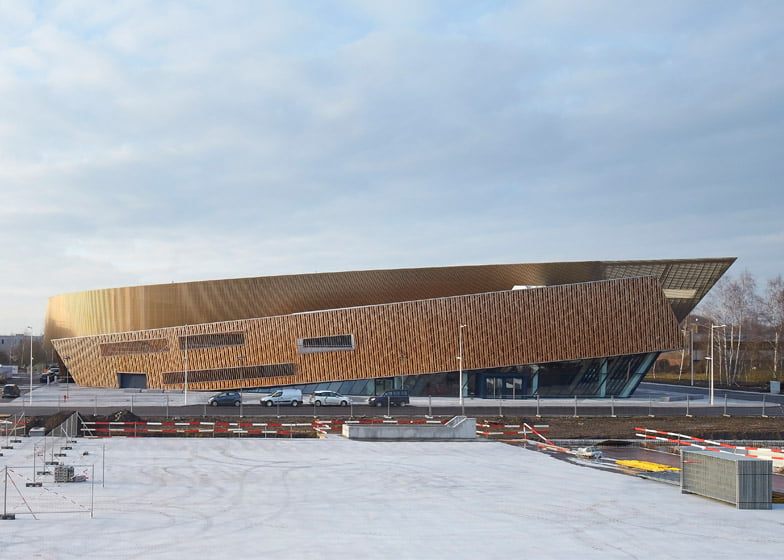
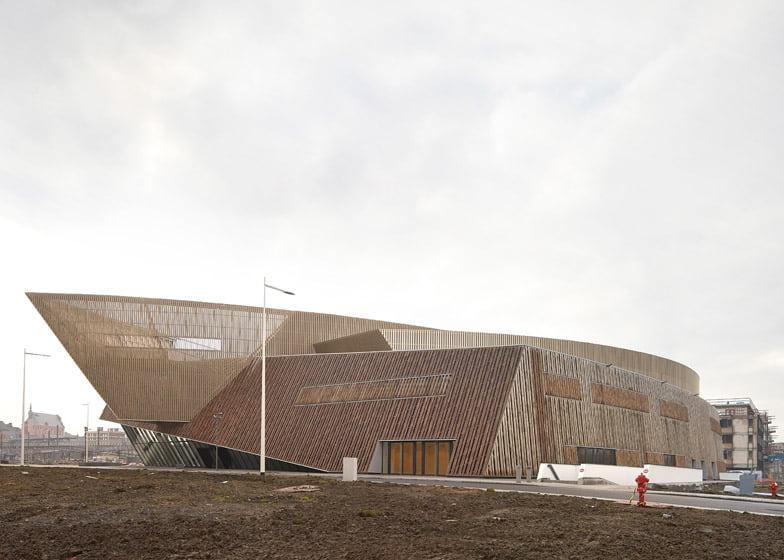
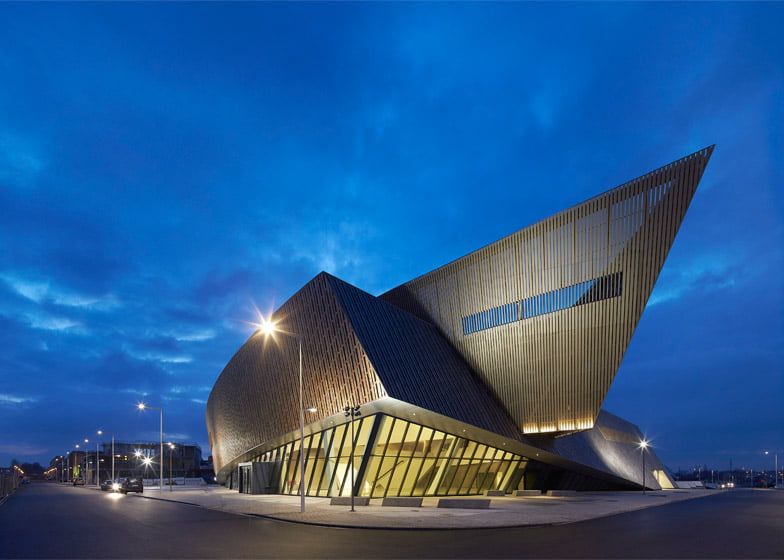
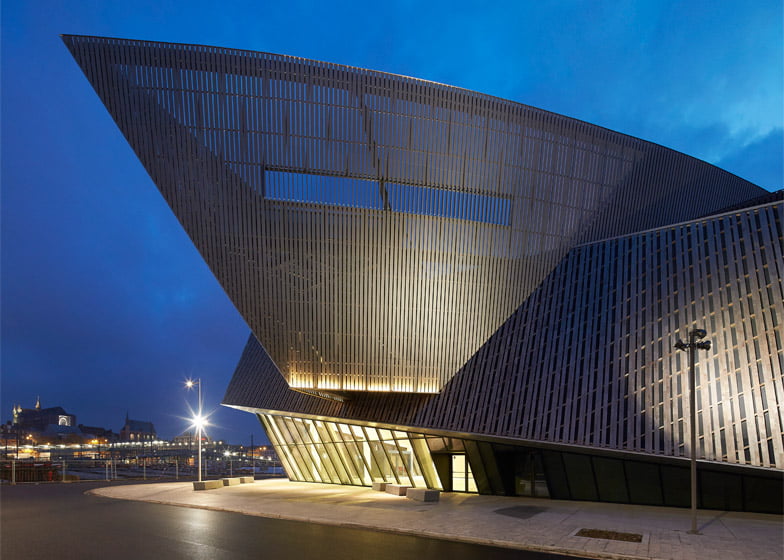


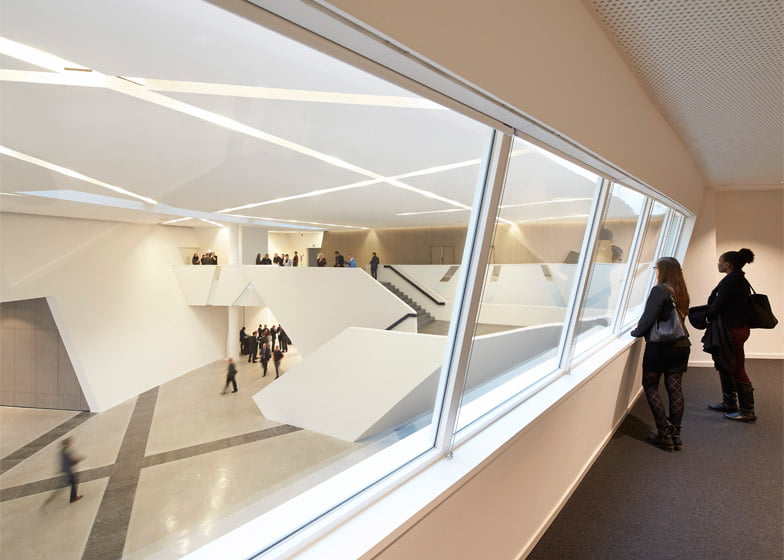
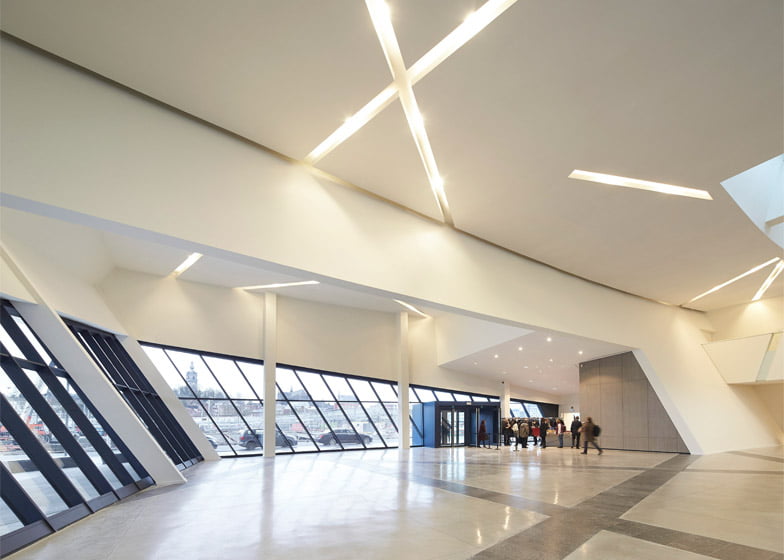
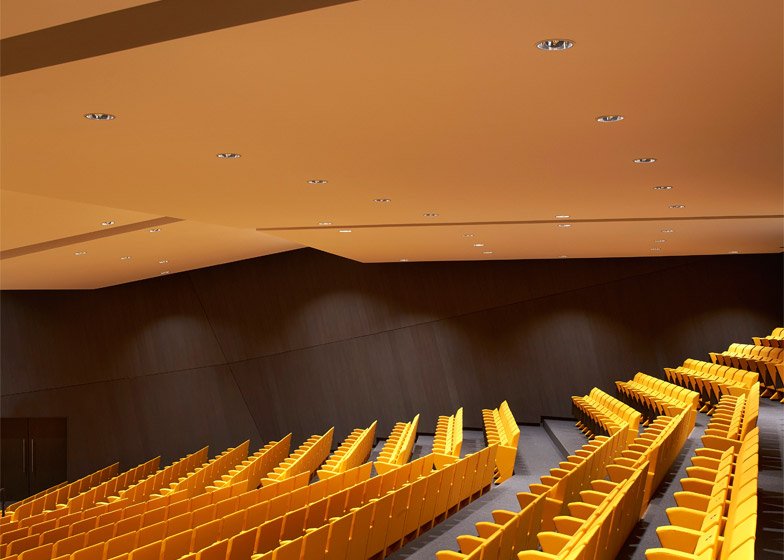
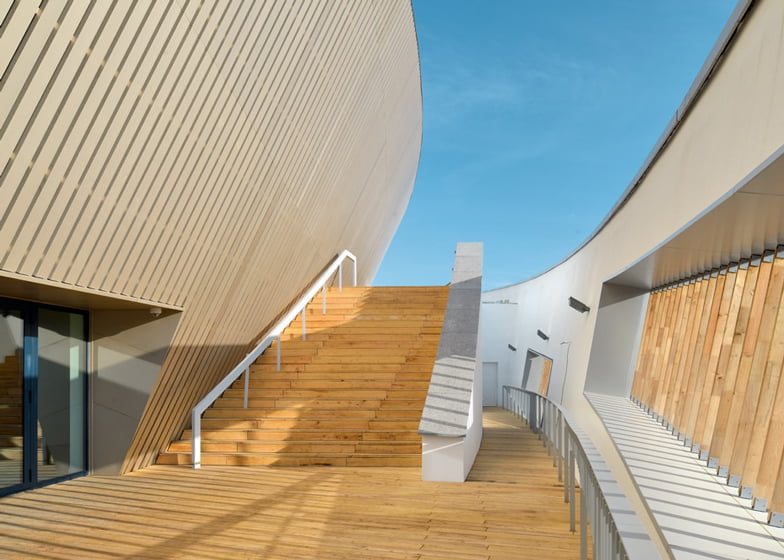
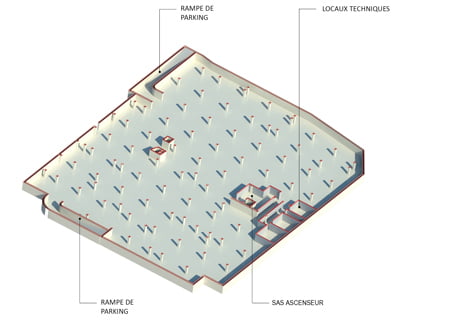
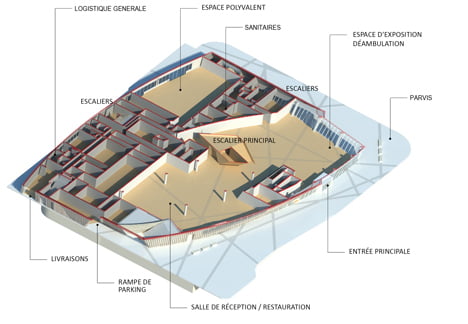
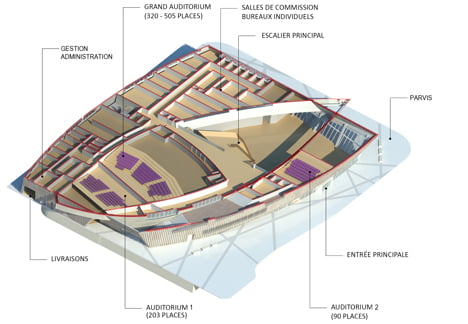
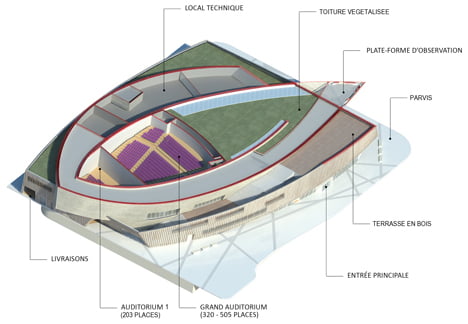
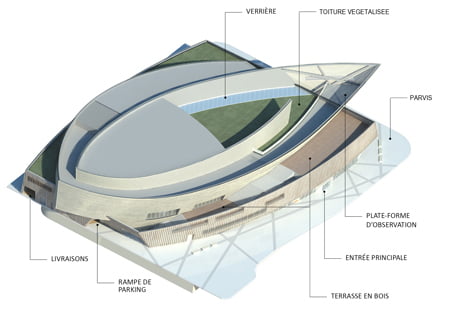


“If you build in the right way using high-quality materials, innovation and technology, you will create something long lasting and sustainable.”

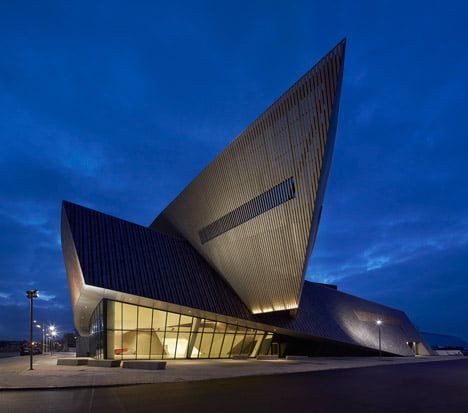
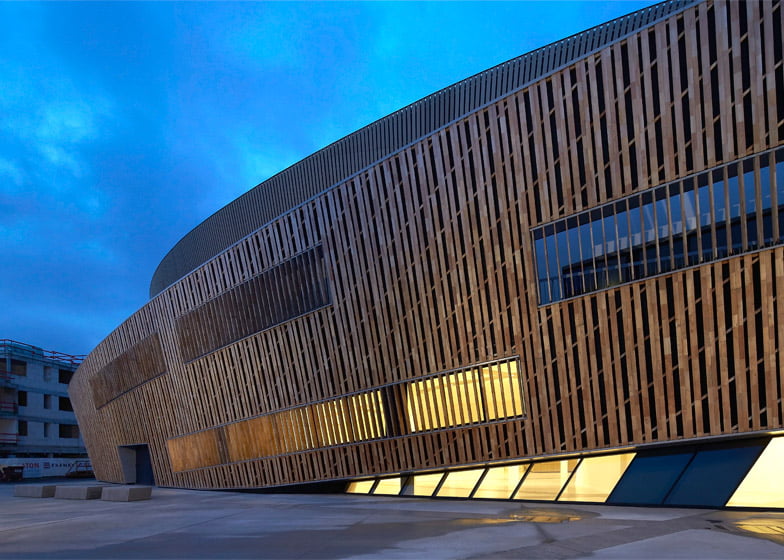
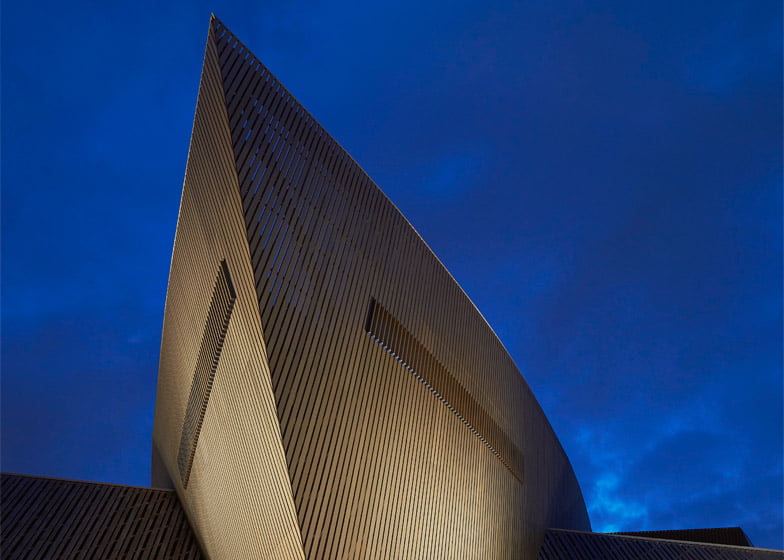
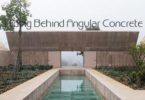





Leave a Comment
You must be logged in to post a comment.